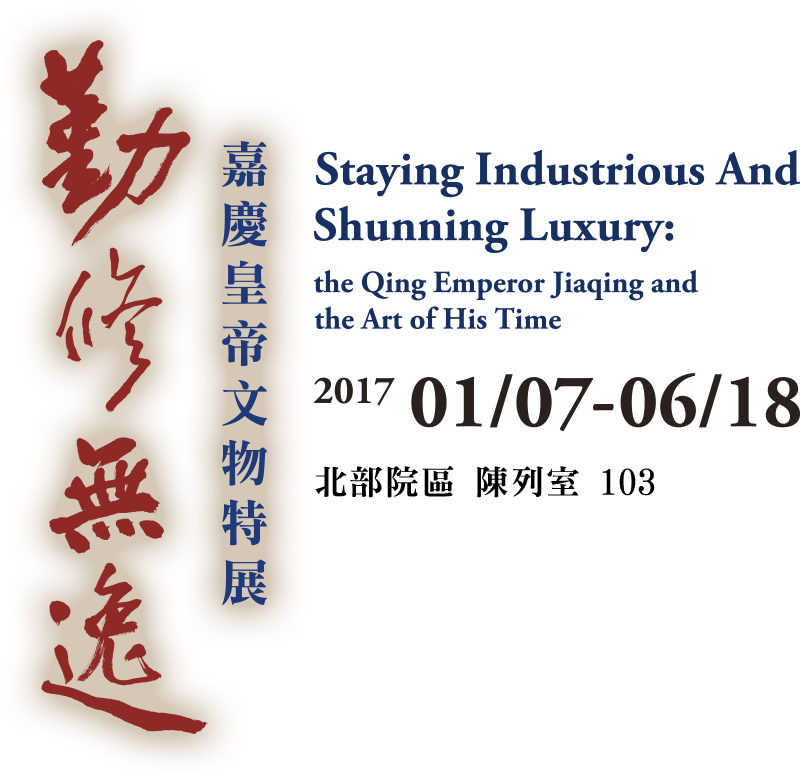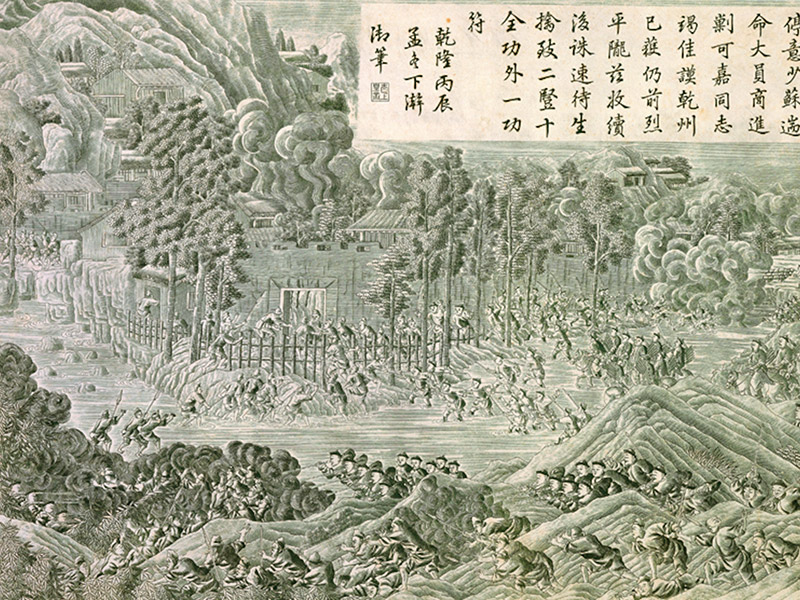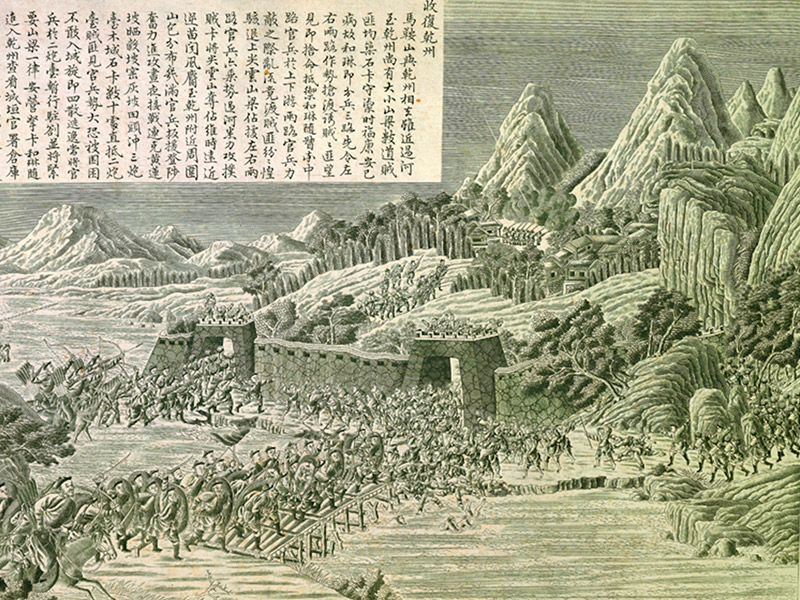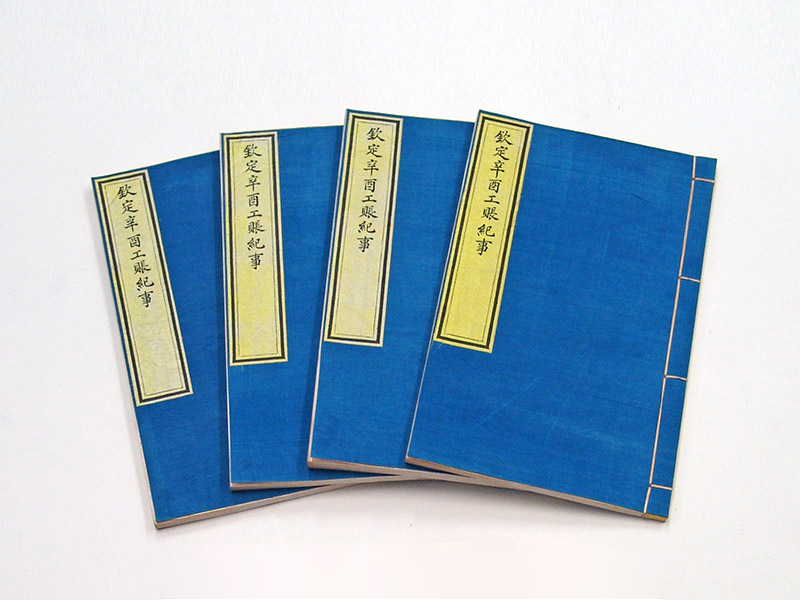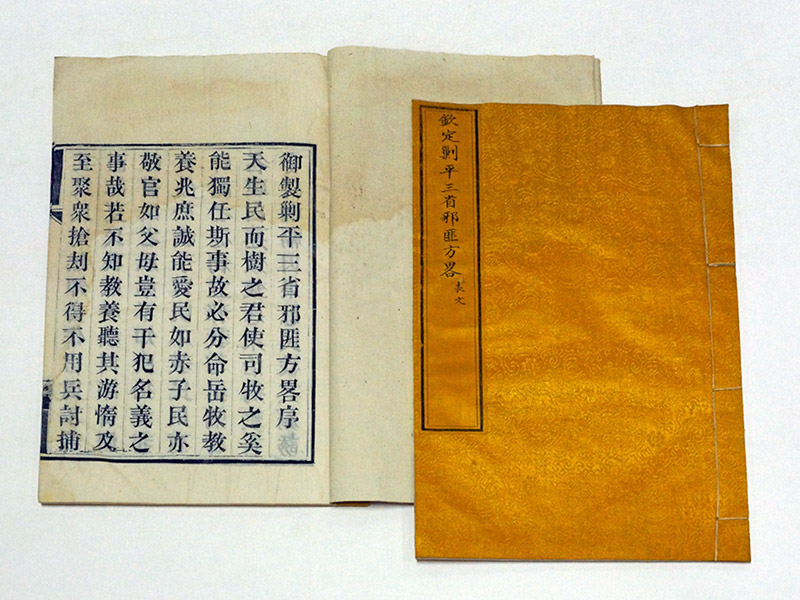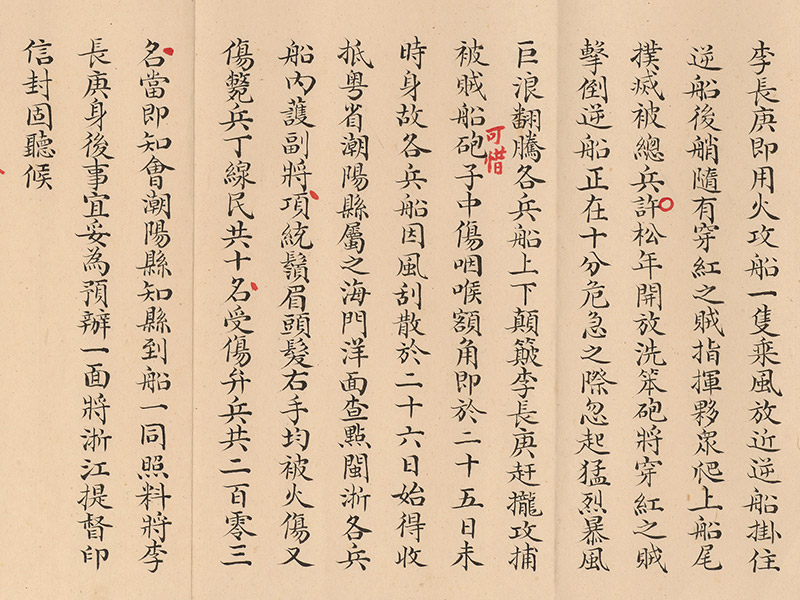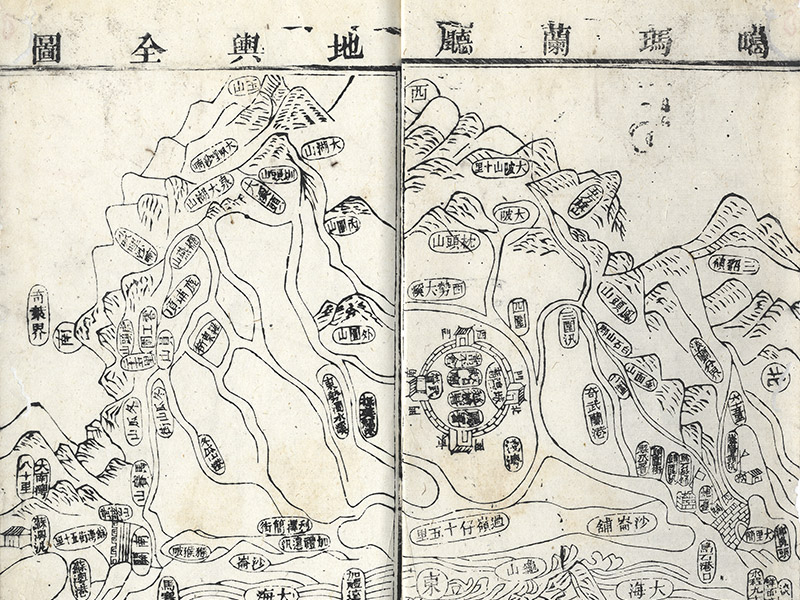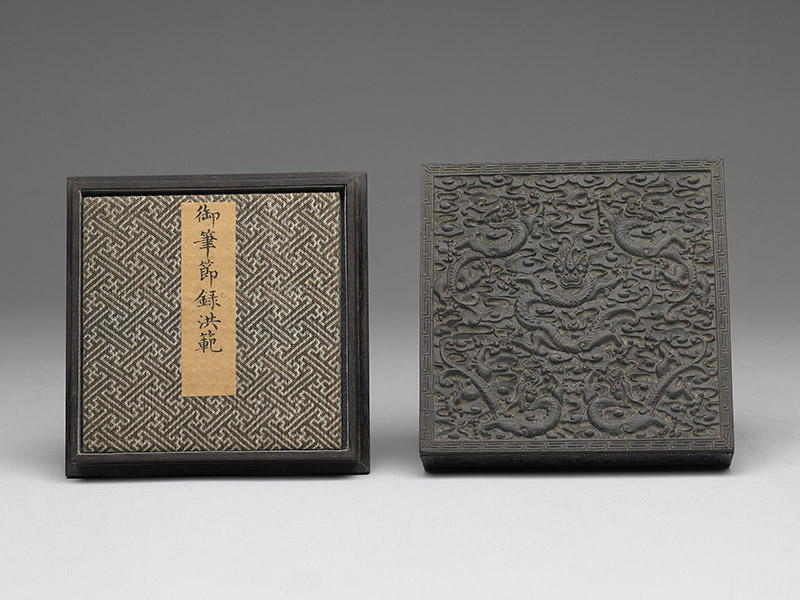The transition between the reigns of the Qianlong (1736-1795) and Jiaqing (1796-1820) emperors, which coincided with the turn of the 18th and 19th centuries, is often seen as the beginning of the decline of the Qing dynasty. Such issues as rampant corruption among officials, social unrest, civilian rebellion, infestations of pirates along the coast, and river floods were among the challenges the emperor had to counter. The Jiaqing emperor endeavored to restore order in the empire by severely punishing corrupt officials, forcefully quelling civil unrest while encouraging rebels to surrender, and heeding the budgets allotted for river engineering and the actual effects of implementation. This section focuses on historical documents that would guide the audiences to better understand his administration.
General Ming Liang's Conquest of Pinglong
- From Pingding Miaojiang Tu (Illustrations on the Pacification of the Miao Region)
- Copperplate
- 1st year of the Jiaqing reign (1796), Qing dynasty
Heliyen's Recapture of Qianzhou
- From Pingding Miaojiang Tu (Illustrations on the Pacification of the Miao Region)
- Copperplate
- 3rd year of the Jiaqing reign (1798), Qing dynasty
Qinding Xinyou Gongzhen Jishi (Imperially Endorsed Record of Construction and Relief for the Xinyou Disaster)
- Compiled on imperial order by Qinggui (1737-1816), et al.
- Imprint of the Imperial Printing Office
- 7th year of the Jiaqing reign (1802), Qing dynasty
Qinding Chaoping Sansheng Xiefei Fanglue (Imperially Endorsed Plan on Suppressing Rebels in the Three Provinces)
- Compiled on imperial order by Qinggui (1737-1816), et al.
- Imprint of the Imperial Printing Office
- 15th year of the Jiaqing reign (1810), Qing dynasty
Palace memorial reporting on the death of Commander Li Changgeng by cannonshot while pursuing the pirate Cai off the coast of Guangdong
- Submitted by Alinbao (?-1809), Governor-general of Fujian-Zhejiang, and Zhang Shicheng (1762-1830), Governor of Fujian
- February 3, 1808, Qing dynasty
Taiwanfu Gamalan Tingzhi Gazetteer of the Kavalan District in Taiwan Prefecture
- Compiled by Chen Shujun (n.d.)
- Imprint of 2nd year of the Xianfeng reign (1852), Qing dynasty
Lidded sandalwood box with calligraphy by the emperor and twelve jade carvings of the Chinese zodiac
- Jiaqing reign (1796-1820), Qing dynasty
